Leader of Sony: Smart TVs of the future will be designed in a modular fashion
- Tram Ho
Televisions were originally just giant boxes that broadcast black and white pictures. Later they evolved into flat screen TVs with high-resolution color images. And now TV manufacturers are facing a problem: screens are getting bigger and bigger, so they can’t fit on a wall. The question now is when does our TV screen become so large that it is called “too big”?
” Bigger is not necessarily better, ” said Mike Fasulo, Chairman and COO of Sony Electronics and Sony North America. ” There are a few things to say about this. The size of the room matters, where you sit and watch TV is also important, and the quality of the components placed into the TV, which is basically a piece of glass. , will make a difference ”
Fasulo’s thinking is endorsed by Angela Dirks, an interior designer in New York who is used to having to arrange all kinds of screens in her projects. “The bigger the TV, the bigger the necessary space, ” she said, praising flat-screen TVs as desirable objects for decorating a room, compared to those big, bulky box TVs in the past. .
” Flat screens are a huge leap in design because TVs used to be super bulky and you had to find a way to organize them and their stupidity, but now TVs are so thin they are much harder to recognize and takes up much less room space, ”she explained. ” When calculating TV placement, you usually have to calculate the seating position and the viewing angle. You have to do some math around the size of the TV and how far it has to be to see it. ”
The math Dirks mentioned can be described as follows: a TV that is most reasonably placed is the way the furniture is facing it about 1.5 to 2.5 times the screen size (ie a 40 TV. -inch will need a space of 1.52 – 2.53 meters between it and the sofa). In terms of height, the TV should be at eye level.
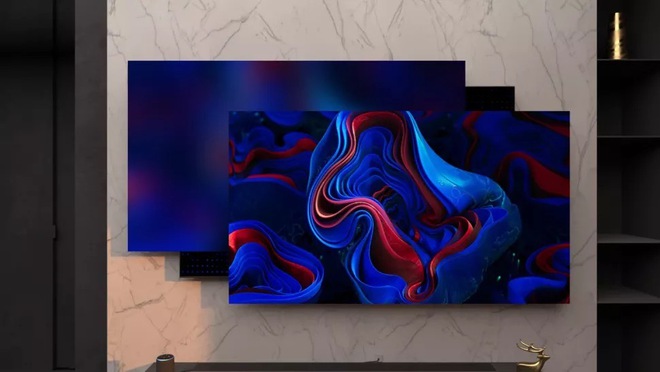
When TV is the top priority
Among the mistakes that TV buyers often make, the most common mistake is to place the product too high on the wall, forcing viewers to stretch their necks while watching. The overall appearance of a room with a TV is a cause of concern for many interior designers.
” People put TV in their living space, and put all furniture towards it ” – Dirks said. ” No piece of furniture is laid out in such a way that users can both talk and look at each other .” Imagine a screen bigger than the 55-inch mid-sized TVs found in most homes: the place where the family gathered would be like a movie theater.
Fasulo and his team don’t see that as a problem, but rather a new mode of operation that shows us over the years how important a TV has become. Being able to make the screen even bigger in ways that are both flexible and technological will serve consumers’ needs in other interesting and exciting ways.
” A decade ago, TVs were really devices with only one purpose, ” said COO Sony. ” And it’s weird that we try to hide them. We build boxes around them and try to hide them. Today, they are very important and an essential part of a household. They are open doors to not only content but also the Internet, social media, art, and design.
Dirks agrees. ” I would say flat TVs are God’s gift to interior designers because old TVs are cumbersome, ” she said. ” If you talk to the old interior designers, they’ll tell you how much they hate TVs because they can never cover them and they just want to throw them out the window! ”
With thin TVs, we have a lot more design opportunities.
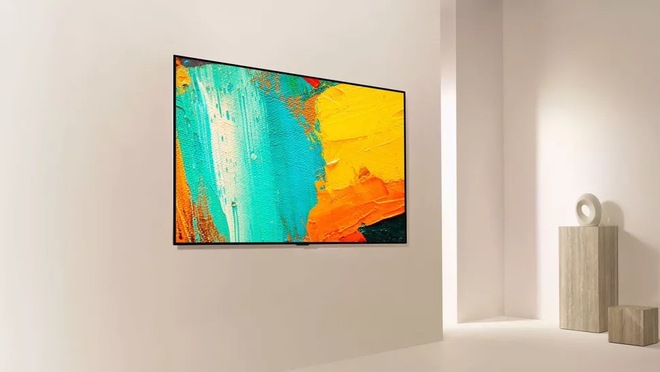
LG’s OLED Gallery TV
The problem with bigger, better TVs
By making the TV the centerpiece of every home and directing more attention to it, we are indirectly asking companies to create larger, more impressive screens. But that can lead to logistics problems, starting with the transportation of goods.
When shipping a 98-inch monitor – one of the largest available in the consumer market – cost and method of shipping become major hurdles. “The transportation makes us sleepless,” said Fasulo, and he continues that while the products become lighter (which helps to lower costs), they become more fragile. ” So we have to constantly study the packaging to make sure they don’t get damaged, which is a challenge. I think the supply chain is getting better at understanding the steps to take and trying to shorten them.” .
One possible solution is already on the market, but not widely available: modular TV monitors, a solution that has the potential to solve many of the problems that large flat screens are facing. must face to face.
Modular screens are essentially screensavers – they help solve some of the transport problems (the smaller the tile, the easier it is to pack and send it securely), passionate about investing in large consumer screens, and freeing interior designers from the shackles of conventional TVs: because of its modular nature, TVs will look seamless when assembled correct and allows for much more flexibility for the design.
” There are dirty things that appear sometimes, look cool but probably never will happen ” – said Fasulo, but the TV above are not among them. ” Although it looks seamless when it comes to images, it’s made up of lots of cells of different sizes, and the current technology is very advanced. In the future, I think it will become advanced. go further “.
Imagine you can buy pieces of glass, or buy them individually, and install them in any way on the wall. This invention will allow customers to smoothly resize TV screens in any room when they want to redecorate, even turning a standard 55-inch TV into a 300-inch panel. giants occupy a wall.
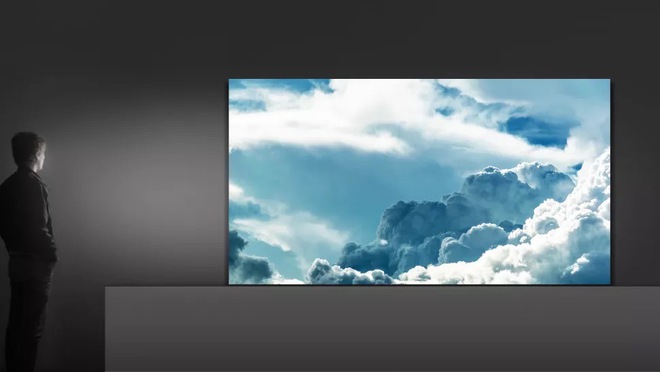
TV The Wall by Samsung
We’ve seen something like that before – Samsung’s The Wall TV, built on Samsung’s modular microLED technology, can reach up to 292 inches in size.
Up until now – mainly because of their high cost – modular panels have been used mostly in retail stores, though expectations have hinged on the possibility of revolutionizing home design. of it is by no means small.
” I’ll give you an example, ” said Fasulo. ” Imagine a car showroom: if we could fill a 140-inch wall with 360-degree interactive images of the latest and greatest cars from brands, so you can Visiting the inside, rotating it, and experiencing something very interesting, it will motivate consumers to buy the product. “
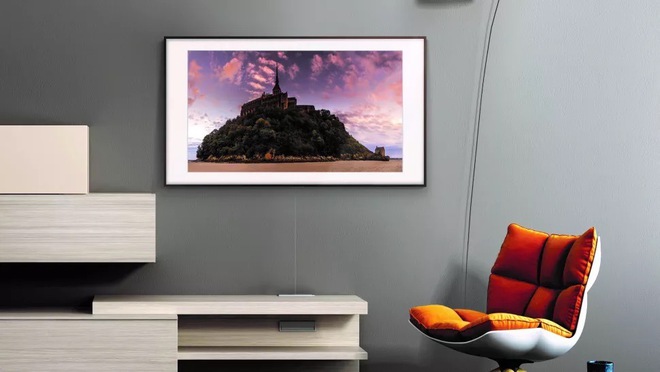
TV The Frame by Samsung
Or perhaps, modular TVs will become something more than just their entertainment content display: can be used to display famous works of art when inactive (TV The Frame by Samsung) or home photos when not in use for streaming TV shows and movies.
Scroll to the future
The modular TV is not the only large-sized product on the market. Another noteworthy product is LG’s roll-in OLED TV, first launched in 2019. Expected to be priced at around $ 60,000 for a 65-inch screen, this ultra-thin TV is capable of being rolled into one. The box also acts as the soundbar when not in use.
Although it is a marked step forward in design, it is not as portable as a modular TV and obviously not easily “hidden” when its flat screen is hidden behind a slide or a storage compartment. , and you will need to put it on the floor or shelf. However, it also contributes to the diversity of TV form factors. While Fasulo favors modular displays, and cannot freely discuss any of Sony’s unpublished products, he is aware that large screens – even in roll-up TV form – are definitely is ” a trend that will continue into the future “.
When analyzing new products with larger sizes than usual, we cannot help but mention the Beovision Harmony OLED TV.
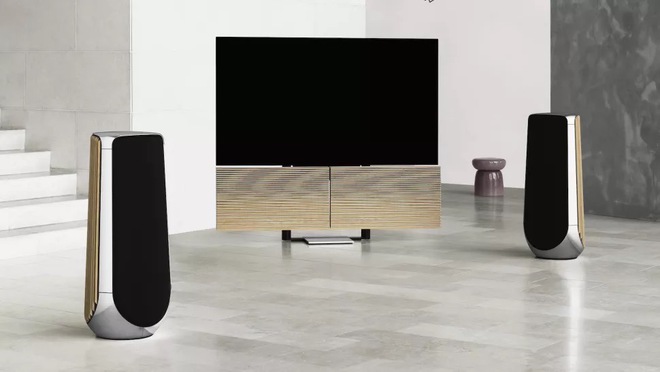
Available in 65, 77, or 88-inch screen sizes (4K on the first two sizes, 8K on the bottom), this TV is impressive in both form and function, and designed with ” Classic entertainment drawer system to hide the TV behind elaborate curtains “. What is the cost of this large-sized TV that is arguably the best-looking design these days? About 16,600 USD.
Finally, while not in the category of classic TV monitors, modern projectors – like LG’s latest CineBeam model, the HU810P – are considered to be able to satisfy your desire for an ultra-large screen. view, turn any room into a home cinema room with content that can be flexibly stretched. In the case of HU810P, the projections can range from 40-inch to 300-inch.
Obviously, the prospects here are virtually endless: whether you’re looking for size, versatility, thinness, beauty, or any combination of these factors, there are quite a few. Solutions aimed at solving the problems of large screens are being investigated. Going back to the first question: how big a screen can really be to be called too big, the answer is … there are no limits at all.
Reference: TechRadar
Source : Genk
